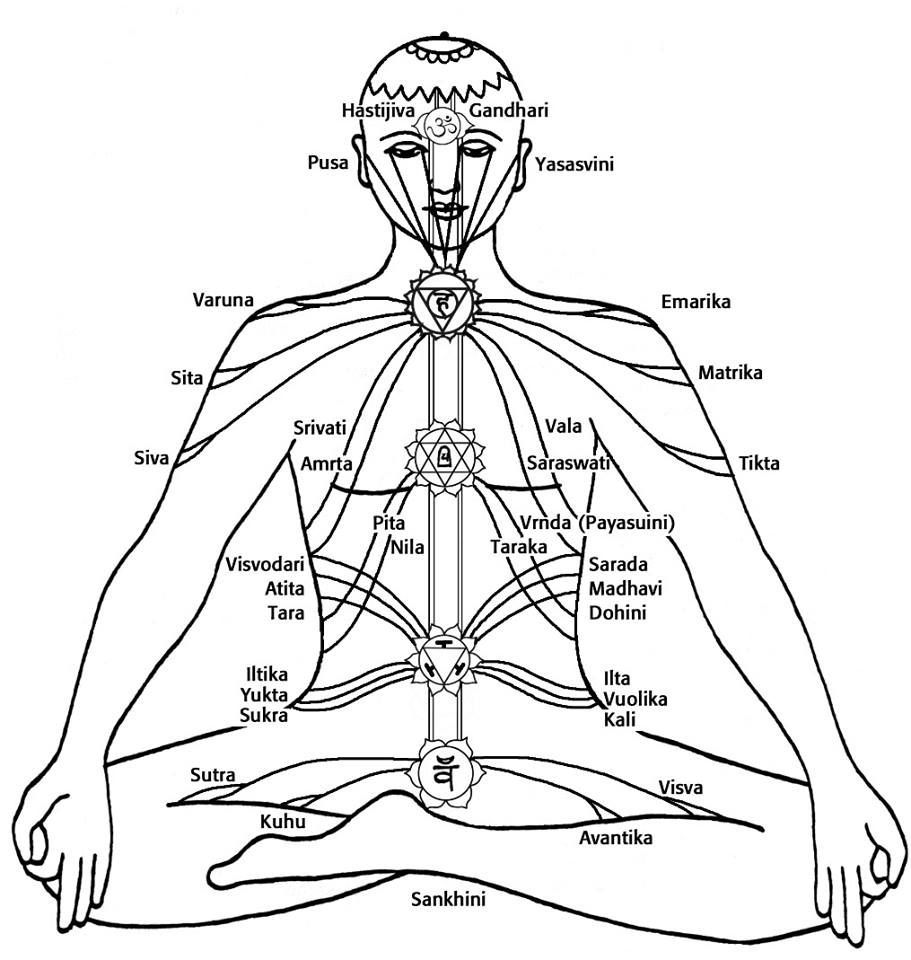Nadi in Yoga
- Sanatan Cosmos

- Nov 15, 2019
- 2 min read

Nadi is important to understand before jumping into Kundalini. This is much like biology which is we need to understand. There are three main channels of prana vayu. There are 3 important nadis, namely Ida, Pingala & Sushumna. Nadi means flow of energy or vibration. This is an energy irrigation system. Ida is located at the left side of the body. the meaning of Ida is comfort. It has a coolness of moon and is influenced with feminine energy.

According to hinduism (tantra), there are 72,000 nadis that channels prana to every cell. Nadis must not be blocked as it can lead to poor mental and physical health. Like the chakras, prana and other aspects of subtle body do not show up on microscopes. Medical science has regulated it into the realm of metaphoric. Ida and Pingala are nadis spiral around the sushumna nadi like the double helix of DNA crossing every chakra. Eventually all three meet at the Ajna chakra.

Ida controls all mental process and the more feminine aspect of our personality as it is cool energy.
Pingala is the solar nadi, begins and ends on the right side of sushumna. It is warm somatic process. It overseas a masculine aspect of our personality. In our life, nadis are dominant. This dominance alternates all day. It's a dance between intuition and rational. For example: a person with pingala move solar qualities. It may include creative and a lot of physical strength. But unless they develop their side of ida, they may lack introspection, receptivity and quietude which is necessary for spiritual awakening.
Equilibrium:
Balance between ida and pingala is the major focus of Hatha yoga which should be done under an expert. Hatah in sanskrit means "forceful". HA represents the solar energy of pingala and THA represents the mind and lunar quality of ida. Balancing sun and moon or fire and water facilitates the rising & awakening of Kundalini. Sushumna stays closed until one of them predominates. The best way to balance is nadi sushodhana or nadi purification/ cleansing. At the end of an asana, a technique of pranayama helps balance the two. Pranamayan must the done after asana ends.





Comments